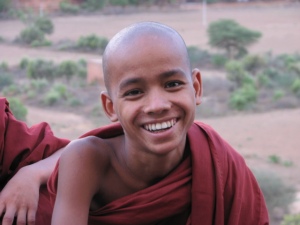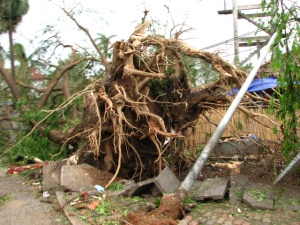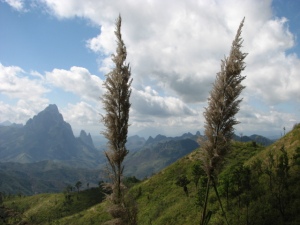The date is 8 March 2008 and newspaper the headline in front of me reads: “66,500 dead and 40,000 missing”. I don’t have the heart to pick it up, despite the fact it would be the first source of English news in days.
I know what happened. I was there…

6 days earlier Myanmar was hit by cyclone Nargis which killed more than 138,000 people and flooded most of the southern part of the country. It resulted in electricity, water and telephone line cuts, separating this secluded southeast Asian nation ever further from its neighbours. The thought of this country being further crippled by forces of nature, on top of everything it’s already gone through brings tears to my eyes and makes me upset that in case nature disasters, there is no one to blame. Nevertheless this trip had taught me more about the country and more about travel than any other.
1st May holidays were closing in and Myanmar was still on my list of countries to visit. It was one of the less touristy destinations on our bucket list, making it automatically more fascinating. Despite being eminent travelers, none of our friends had visited this part of the world before, which was why we had to read up on everything well in advance and prepare well for what awaited us in land once known as Burma.

We landed in Yangoon, Myanmar’s largest city and decided to spend the day exploring what the city has to offer. We were disappointed to find out that it wasn’t much. Other than a complex of huge golden pagodas, several smaller temples and the local market there wasn’t much to see. We were caught in heavy traffic and were followed by stray dogs, passing large open air markets where meat was sold in the hot summer sun. It didn’t seem different from most of the Asian countries we visited before, but the regular power cuts, lack of ATMs and Coca Cola ads as well as the fact that our phones were not working reminded us, continuously, that we were not just in any Southeast Asian country.
After some preplanning in the hotel we befriended a local who was running the facilities we were staying in. I spent some time chatting about the must-visit spots of Yangoon, the hot weather and local fashion. He eventually told me about the special yellow thanaka wooden bricks women mix with

water to create a paste-like substance and put on their face as as cream which serves as sunscreen protecting the skin from the harsh sun and make up at the same time. In no time he was mashing up a paste, showing me how it’s done and dabbing it onto my cheeks, carefully drawing large yellow circles across my face. I ended up putting thanaka on my face every day during this trip.
This is probably the most vivid memory I have of Yangoon which had not fascinated us much. We quickly purchased tickets to visit the northern territory and natural spots which were both UNESCO heritage sites as well as sacred spots for locals.
Bagan is probably the most well known and most visited town in Burma. It is comprised of 3000 Buddhist pagodas built between 11 and 13 century AD. Our hotel was the only one located in the very middle with a 360 degree view of all the temples. As we would sit on the patio, watching the

sunset over the perfectly flat land, we would observe the thousands of temple tops of various shapes and sizes and I remember thinking that we were in heaven.
It was one of those moments in time when everything stops, everything is tranquil and you can only hear yourself breathe and try not to, so you don’t disturb the perfect stillness.
We spent several days and numerous sunrises on top of different pagodas watching this ancient city, observing the ruins and learning more about their significance.
I don’t know whether it was because it was out of season or if Myanmar was just not the spot of choice for tourists, but we were the only people around and we seemed to have all the time in the world. Everything seemed too good to be true.
As we were sitting on the patio one night the local hotel manager who joined us observed that there was a slight breeze. I clearly remember him commenting that the breeze was not good and that they

wouldn’t get the wind so high up North during May. The following day we found out that our flight to Inle Lake, further southeast of the country, was cancelled and that there was a “big storm” in Yangoon which landed all the flights.
We had a few more days until our departure from Myanmar but we were desperate for more information. The last thing you want to do is be find yourself trapped in a land of no internet, lack of phone lines and political instability. Our minds were working fast, we needed to find a way to get back to Yangoon. It was the only way to get more information.
After a grueling 20-hour ride south to Yangoon, we finally entered the southern territories at 6am. The sun was creeping up, waking us from the flimsy sleep in the car. Everything was perfectly still and at one point in time I raised my head only to notice we were moving through water. The wheels of the car were submerged and we were passing behind other vehicles trying to enter the city.

At that point in time we looked out into the horizon and saw that the city was flooded. Houses seemed to be floating and by passing through this river we seemed to be disturbing the peace, causing ripples around the car.
An hour later, following a very slow ride to the city, we finally entered Yangoon to see that the city was fully awake and mobilised. The army was engaged moving the trees which were in the middle of the roads. People were clearing glass from the streets and moving lamp posts, billboards as well as collecting food and scraps to make shelter.
Most of the buildings were severely damaged and it wasn’t until we saw trees laying horizontally, ripped out from the ground together with their roots that we gasped in disbelief. We were witnessing the aftermath of what was one of the biggest tragedy Myanmar has ever had.

Over the next few days, we desperately tried to get in touch with loved ones, using the only satellite phone in the city, gathering the spare US dollars we had and dealing with a huge rise in food, hotel and transportation prices. The cost of petrol jumped 10 times following the disaster and suddenly we could no longer afford the regular trips to the airport to enquire what was happening with our flight and when the airport was due to open.
We learned that the cyclone washed up various debris onto the runway and damaged some of the communication equipment. This resulted in a general airport shut down and thousands of tourists stranded in Yangoon. All those tourists we couldn’t find during the first few days suddenly appeared at the airport – desperately trying to get out. People were trapped with no money and no way to get cash. They were refused to stay at the airport and couldn’t even afford a trip back to the city. All this however was not even close to what the locals were experiencing.

The villages surrounding Yangoon were flooded, with poor sewage systems, drowning thousands who couldn’t swim and trapping many more inside their houses without food or fresh water.
It was incredible to watch so many people get together and everyone working on a rescue mission or towards obtaining food and other supplies. The army we heard so much about was utilising equipment to remove trees and enable traffic, working in teams spread around the city. It felt like a war zone.
Cyclone Nargis had cut off Myanmar even further from the rest of the world.
Within a few days we were able to get on the first flight out to Singapore and officially became the first foreigners to leave Myanmar. We were extremely lucky! Having landed in Singapore we only then started getting information and reading what the international media was reporting. We were interviewed by various media houses and our photos and stories made it around the world. It turns out everyone wanted to find a way into Myanmar and international press was not allowed to enter without the appropriate visas. We found out the people were desperate for help but due to sanctions agains Myanmar international agencies couldn’t get their act together to deliver aid by air for quite a while. And while the politics played their usual role, people were suffering, dying.

It was the only time I was truly grateful to be a foreigner and have a safe haven to escape to but at the same time my heart went out to the locals, their families, loved ones who were suffering so much. There was nothing we could do. The feeling of helplessness is the worse.
Myanmar will always remain in my thoughts as one of the most naturally pristine countries visited and one I ought to go back to. Despite the political instability and years of suppression and isolation the people we met were lovely, helpful and joyful individuals who had that same Southeast Asian gentle charm I adore.
Maybe one days things change, people stop hating and nature stops punishing the already vulnerable.













